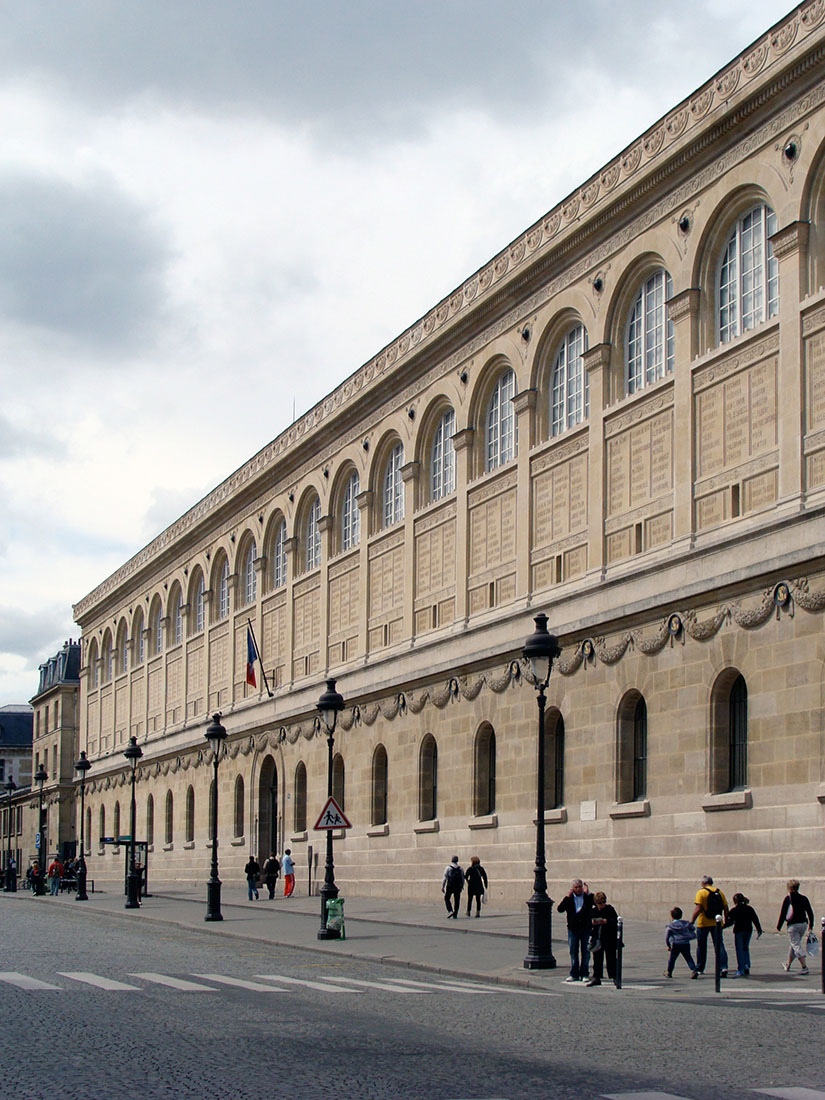 |
 |
 |
 |


Bibliotheque St.Geneviève - Paris
Place du Panthéon 10, Paris
1843-1850
The Sainte-Geneviève Library is located on the Place du Panthéon in the 5th arrondissement of Paris. The building is an early example of cast iron constructions.
The library considered to be an important work of the architect Henri Labrouste. It was built from 1843 to 1851 according to his plans. For the first time in France,
a library was not designed as an extension of a monastery or a castle, but as an independent library, which should be accessable for the public.
Le Corbusier considered the building as the first step on the way to "modern architecture".
In the construction of libraries the danger of fire always got a special attention in the 19th century. A popular answer to this danger was the use of iron,
which was then a new building material. Most library buildings from this period included iron constructions which were not visible. Only in subordinate spaces
such as books magazines the iron constructions were shown unhiddenly. In the Sainte-Geneviève Library by Labrouste the iron is visible, or even straightforward staged.
This design decision makes the construction and function of the building recognizable.
The facade is designed in the style of the Italian Renaissance and bears the names of 810 famous poets, thinkers and researchers in the parapet areas
below the windows of the reading room. Behind the name plates are located the bookshelves. Protected from light, there are the books magazines
located on the ground floor, lateral to the vestibule. These magazines include a collection of rare books, prints and manuscripts. Also positioned on
the ground floor are the administrative offices. The separate staircase is located at the end of the vestibule at the back of the building.
While it is relatively dark in the vestibule, the staircase gets more light with every step.
The large rectangular reading room has an area of 1780 m² and occupies the entire upper floor. Along the middle line this space is divided in halfs
by eighteen iron columns. The light-filled reading room with great ceiling height measures 80 m in length, 17 m in width and 15 m in height.
The eighteen channeled cast-iron pillars are positioned on stone pedestals. The iron pillars are transformed into arches and support the ceiling,
consisting of two parallel barrel vaults. The vaults are covered by a gabled iron roof which protects the library from the weather. The walls of the reading room
are covered with bookshelves up to the height of 5 m. A gallery runs around the reading room in the height of 2.5 m above floor. This gallery can be reached
by four corner staircases. Bookshelves beneath the gallery create small spaces between the outer wall and the reading room. These bays give access to even
more narrow stairs. The books transport from the magazine into the reading room is made via two narrow spiral staircases, located in the walls of two building corners.
The reading room is lit with natural light from the high lateral windows, originally a gas lighting was installed in the reading room. Since the arrangement of the tables
was changed in 1930, the reading room has 700 work places. All ornaments as well as the lathed chairs with low backrests are designed by Henri Labrouste.